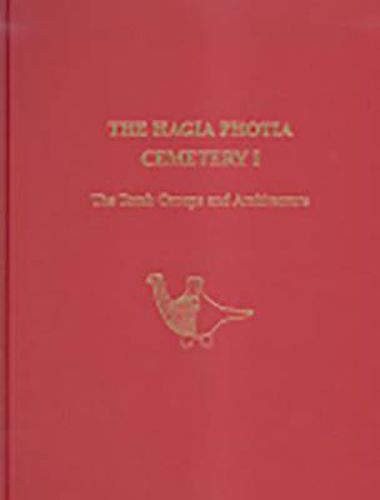Readings Newsletter
Become a Readings Member to make your shopping experience even easier.
Sign in or sign up for free!
You’re not far away from qualifying for FREE standard shipping within Australia
You’ve qualified for FREE standard shipping within Australia
The cart is loading…






The Hagia Photia Cemetery takes its name from the nearby village on the northeast coast of Crete, 5 km east of modern Siteia. This large Early Minoan burial ground with over fifteen hundred Cycladic imports was discovered in 1971. A total of 263 tombs were excavated as a rescue excavation in 1971 and 1984. Among the 1800 artefacts are some of the earliest known Cretan discoveries of several types: the grave goods come mostly from the Kampos Group, an assemblage of artefacts known mainly from the Cyclades. Similarly, the tombs represent an architectural style and a series of burial customs that are foreign to Crete but familiar from elsewhere within the Aegean. In fact, the cemetery has such close parallels from the Cyclades that it has often been regarded as a Cycladic colony. The burial contents are an extremely interesting body of evidence for the study of the formative phases of Minoan Crete.
$9.00 standard shipping within Australia
FREE standard shipping within Australia for orders over $100.00
Express & International shipping calculated at checkout
The Hagia Photia Cemetery takes its name from the nearby village on the northeast coast of Crete, 5 km east of modern Siteia. This large Early Minoan burial ground with over fifteen hundred Cycladic imports was discovered in 1971. A total of 263 tombs were excavated as a rescue excavation in 1971 and 1984. Among the 1800 artefacts are some of the earliest known Cretan discoveries of several types: the grave goods come mostly from the Kampos Group, an assemblage of artefacts known mainly from the Cyclades. Similarly, the tombs represent an architectural style and a series of burial customs that are foreign to Crete but familiar from elsewhere within the Aegean. In fact, the cemetery has such close parallels from the Cyclades that it has often been regarded as a Cycladic colony. The burial contents are an extremely interesting body of evidence for the study of the formative phases of Minoan Crete.